
Very often, the source of Moro’s inspiration became works of medieval art. The artist believed that medieval symbols could be used to spiritualize contemporary art.
Moreau hundreds of times copied scenes of old tapestries, illustrations from manuscripts, made sketches of sculptures, metal and jewelry, which he found not only in the halls of museums, but also in books and magazines. In 1882, the Museum de Clooney acquired the famous tapestry “Lady with the Unicorn”.
Moreau was struck by this masterpiece of Flemish art, and since then a unicorn, a symbol of strength and purity, has increasingly appeared on his paintings. The painting “Unicorns” was never finished. It became culminating in the development of this theme and one of the last attempts of the artist to revive medieval traditions. He conveyed the scene, “which takes place on a magical island, where only women and unicorns live.”
The graceful nude makes you think of Fontainebleau’s school, and the contrast between the dressed and naked figures echoes Titian’s famous “Earthly and Heavenly Love”.
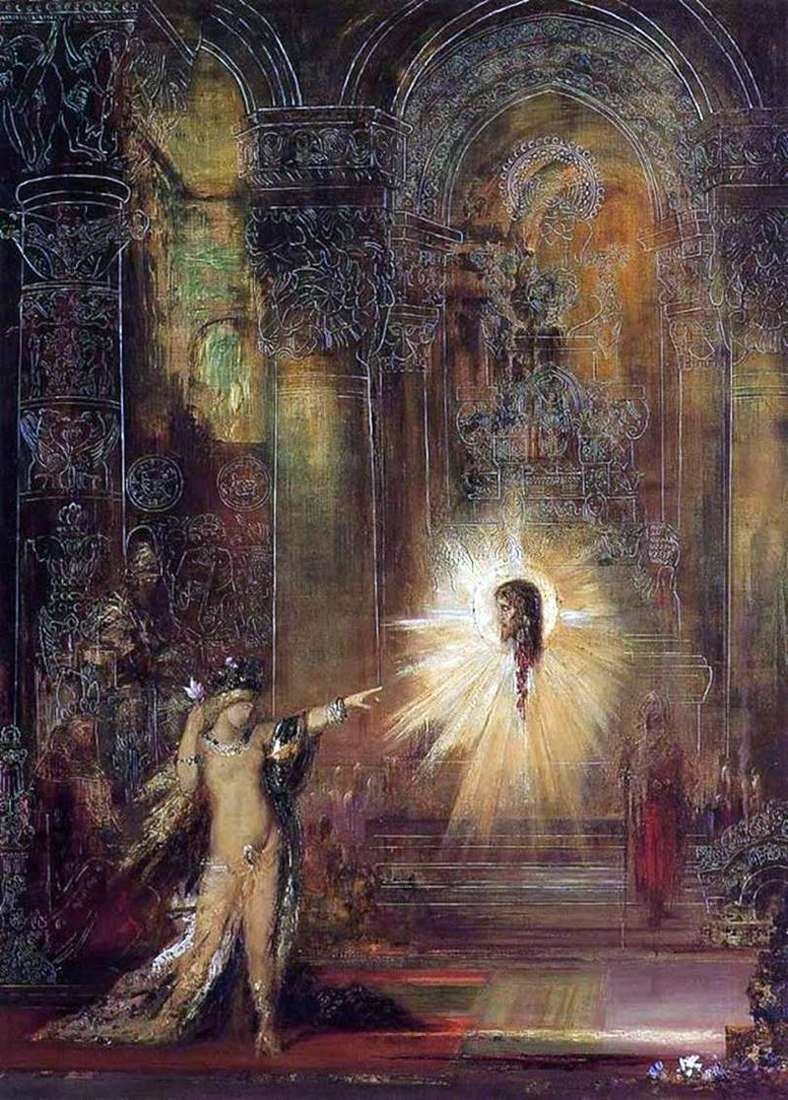 Appearance by Gustave Moreau
Appearance by Gustave Moreau Inspiration by Gustave Moreau
Inspiration by Gustave Moreau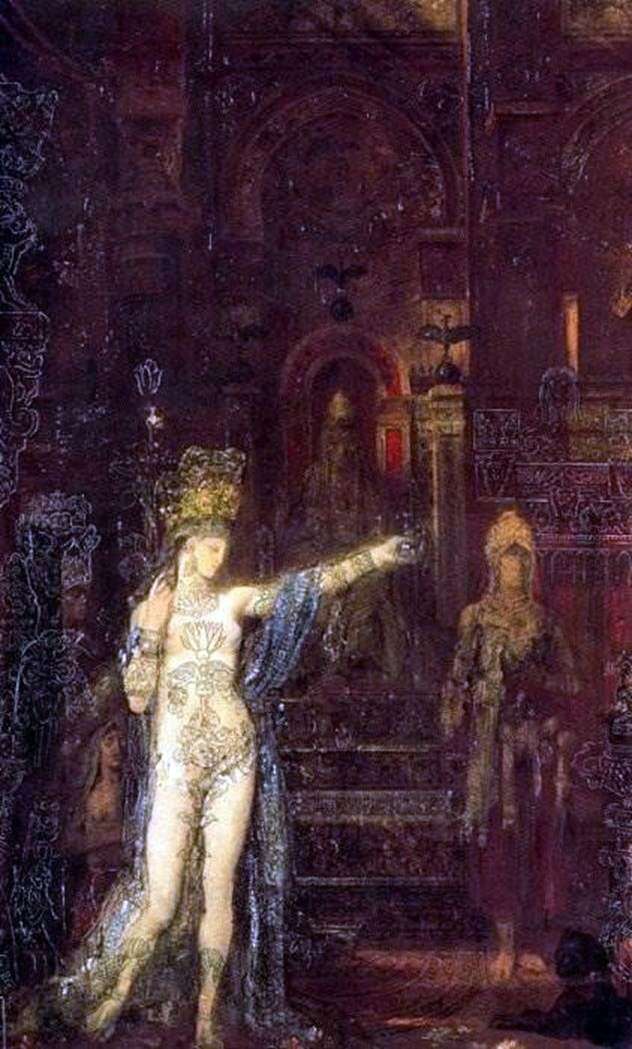 Tattooed Salome by Gustave Moreau
Tattooed Salome by Gustave Moreau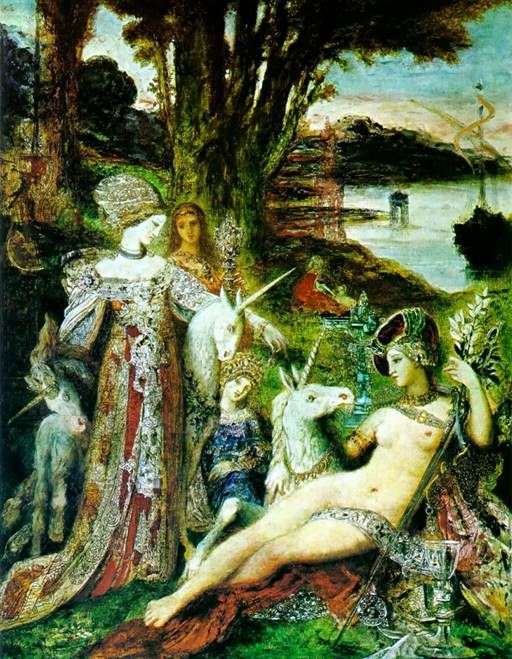 Unicornios – Gustave Moreau
Unicornios – Gustave Moreau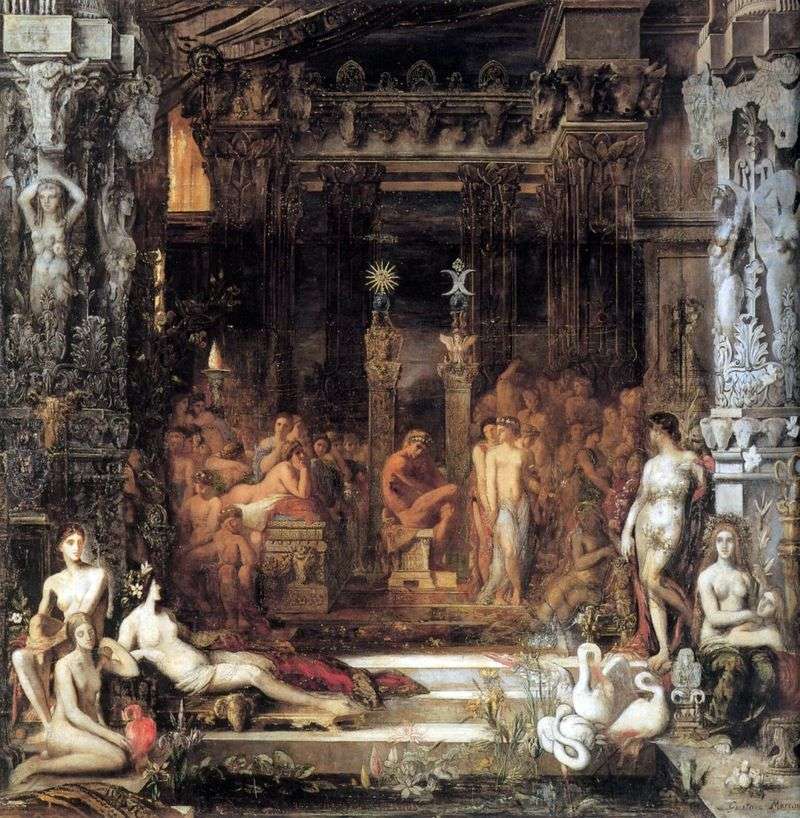 Tesea’s Daughters by Gustave Moreau
Tesea’s Daughters by Gustave Moreau Samson and Delilah by Gustave Moreau
Samson and Delilah by Gustave Moreau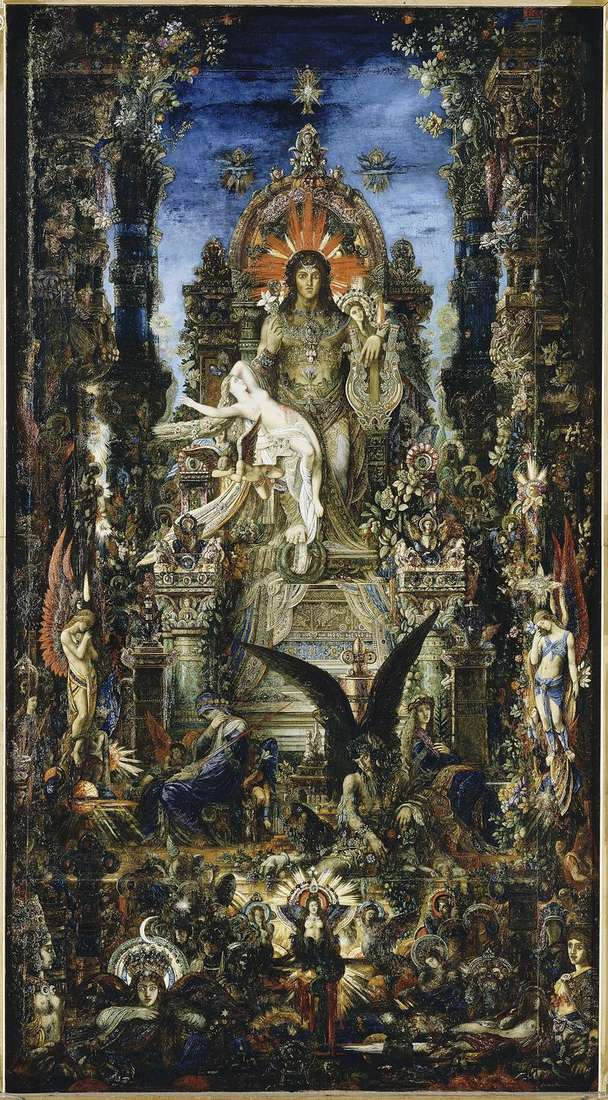 Jupiter and Semela by Gustave Moreau
Jupiter and Semela by Gustave Moreau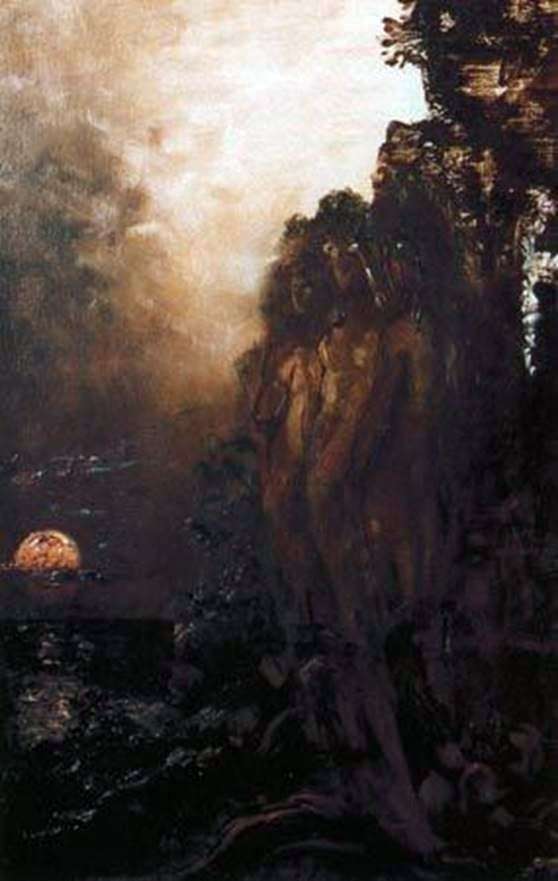 Sirens by Gustave Moreau
Sirens by Gustave Moreau